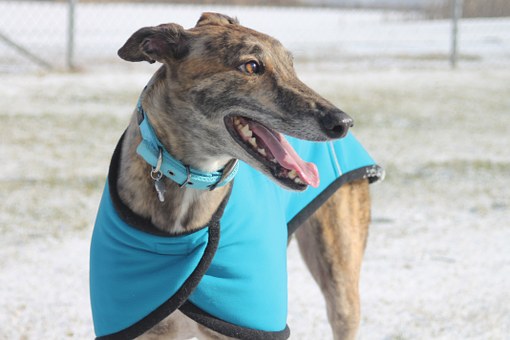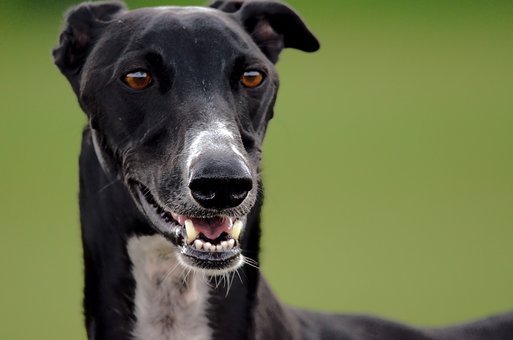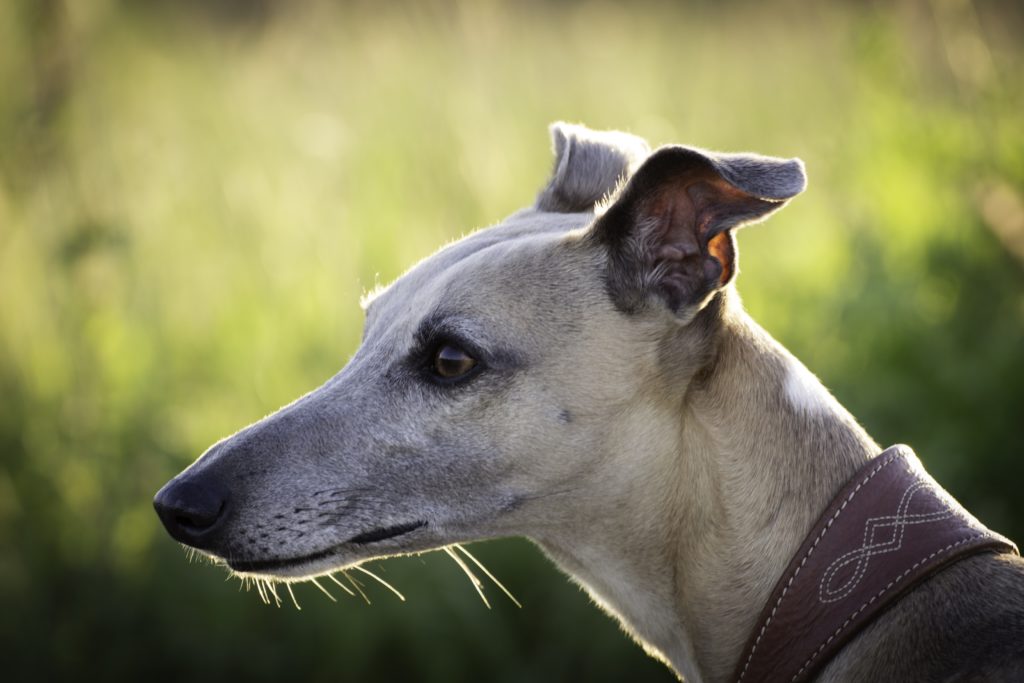Whenever a person considers bringing home a dog, one of the most common questions asked is “How much does this breed shed?”
The good news if you’re considering a Greyhound is that Greyhound shedding is fairly minimal — for the most part. Greyhounds have very short coats, but how much they shed will vary from dog to dog.
In this post, we’ll dive deeper into how much you can expect your Greyhound to shed, as well as the breed’s appearance and grooming needs.
Greyhound Appearance

The Italian Greyhound is a tall and lean dog that is built for speed. Despite their slender appearance, they have muscular hind legs that are quite powerful, which is how these dogs get their remarkable speed.
They have a royal look to them, which is why they were associated with British nobility for hundreds of years.
Italian Greyhounds typically stand 26 to 30 inches tall at the shoulder and will weight between 60 and 70 pounds.
Despite being large dogs, they are actually extremely quiet, and well-suited for apartment and city life.
Although their name would suggest that you would only find their coat in gray, “Greyhound” is actually a bit of a misnomer. Their short, smooth coats can come in almost any color, including fawn, blue, black, red, white, and yes, some do come in gray. Others will also have various shades of the striping pattern known as brindle, while some can be multi-color, which means white and at least one other color.
Italian Greyhound Shedding
So down to the big question… “How much do Greyhounds shed?” As mentioned at the top, Greyhounds are typically low to average shedders when compared to other breeds. Their short, light coats are easy to groom and maintain, but they do indeed shed their fur.
How much they shed exactly will depend on the individual dog as well as the time of the year. Some people even think that lighter-colored Greyhounds shed more than dark ones, so it all depends. But even a Greyhound that is considered to be a heavy shedder will shed a lot less than a breed like the Siberian Husky or German Shepherd.
Greyhound Grooming Tips

Greyhounds do still require some minimal grooming for their short coats. Weekly brushing can help keep their shedding more manageable, and your dog will often learn to love the massage he receives from a rubber curry brush or a hound mitt.
This can help keep loose fur from getting all over your home and furniture. Regular brushing also helps to keep their skin oils at a healthy level.
It can also help reduce how often your dog needs a bath. Greyhounds don’t require frequent bathing regardless, but they should be washed every so often just to keep their coats fresh.
And since standard shampoos tend to dry out their skin too much, you should use a dry shampoo. This will keep your dog’s coat shiny and smooth as well as smelling fresh.
If you get your Greyhound as a puppy, you should get him comfortable with brushing while he is still young. This will also help him be more comfortable with you handling his paws, ears, and mouth. Your veterinarian will also thank you as it will make exams easier for this timid breed.
When you groom your Greyhound, make sure to check the dog’s skin for sores, rashes, or signs of infection. This will typically be in the form of redness, inflammation, or tenderness to the touch. Check his coat all over, particularly his nose, mouth, eyes, and paws. Doing this weekly can help you catch any health issue early on.
Other Grooming Needs
Beyond maintaining a healthy coat and managing your Italian Greyhound shedding, you should also make sure to frequently check his ears, teeth, and paws.
Greyhounds can get canine ear infections, so you should always check them for redness or a foul odor when you are doing your weekly brushing. You can even clean his outer ears with a moist cotton ball, but make sure to never insert anything into the ear.
Greyhounds have poor dental health, especially those that were adopted racing dogs, so you will need to regularly brush your dog’s teeth as well to keep his mouth healthy and his breath fresh. Track dogs, in particular, are known for developing periodontal disease, and regular brushing can help keep any dental disease from forming.
Lastly, a Greyhound’s paws will need some care as well. Trim his nails a couple times a month if they don’t wear down naturally, but be careful not to trim them too far, or you will cause bleeding. The general rule of thumb is that if you hear your dog’s nails clicking when they walk on the floor, then they are too long.
Greyhounds can be very sensitive about having their paws handled, so make sure to build trust and not hit a vessel, or they will be reluctant to have their nails trimmed in the future. However as long as you don’t hurt the dog and make grooming enjoyable for the animal, it can be a good bonding experience for you both.




